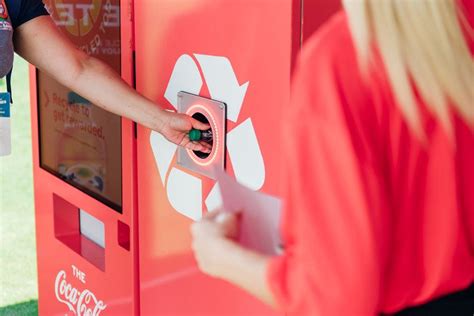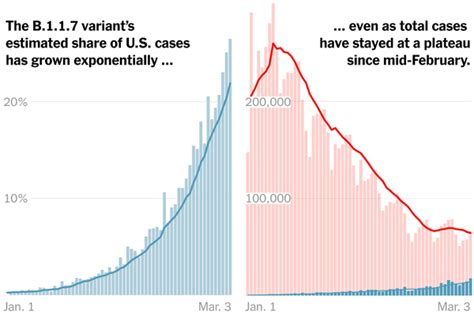
Coca-Cola is piloting a program featuring reverse vending machines that reward consumers for recycling their empty beverage containers, aiming to boost recycling rates and reduce plastic waste. The initiative, currently being tested in several markets, allows consumers to deposit empty Coca-Cola bottles and cans into the machines in exchange for rewards such as discounts or loyalty points.
Coca-Cola’s initiative introduces reverse vending machines as part of its global commitment to environmental sustainability, aiming to create a closed-loop system for its packaging. These machines provide an incentive for consumers to recycle, directly rewarding them for their participation. This pilot program reflects Coca-Cola’s broader strategy to reduce plastic waste and promote recycling across its global operations.
The reverse vending machines are equipped with technology to identify and sort different types of containers, ensuring that only eligible Coca-Cola products are accepted. Once a container is deposited, the machine scans the barcode or uses other identification methods to verify the product and award the corresponding reward to the consumer. The collected containers are then processed for recycling, contributing to Coca-Cola’s goal of increasing the use of recycled content in its packaging.
The pilot program is being implemented in select locations to gather data on consumer behavior and the effectiveness of the reverse vending machines. Coca-Cola plans to use the results of the pilot to refine the program and potentially expand it to other markets. This initiative is part of the company’s broader efforts to address the growing concern over plastic waste and promote a more sustainable approach to packaging.
Coca-Cola’s global sustainability goals include reducing its environmental footprint by investing in recycling infrastructure, promoting the use of recycled materials, and working with partners to improve waste management systems. The reverse vending machine program is one of several initiatives aimed at achieving these goals and demonstrating Coca-Cola’s commitment to environmental stewardship.
The effectiveness of reverse vending machines in increasing recycling rates has been demonstrated in various countries, particularly in Europe, where such systems are more widespread. By offering direct incentives to consumers, these machines can significantly improve the collection and recycling of beverage containers, reducing the amount of plastic waste that ends up in landfills or the environment. Coca-Cola hopes to replicate this success in other markets through its pilot program and contribute to a more circular economy for its packaging.
The introduction of reverse vending machines aligns with growing consumer awareness of environmental issues and increasing demand for sustainable products and packaging. Coca-Cola recognizes the importance of addressing these concerns and is committed to innovating new solutions that promote recycling and reduce waste. The reverse vending machine program is a tangible example of this commitment and reflects Coca-Cola’s efforts to engage consumers in its sustainability initiatives.
Coca-Cola’s investment in reverse vending machines is a strategic move to enhance its brand reputation and demonstrate its corporate social responsibility. By actively promoting recycling and reducing waste, Coca-Cola aims to strengthen its relationship with consumers and build trust in its commitment to environmental sustainability. The success of the pilot program could lead to wider adoption of reverse vending machines and further reinforce Coca-Cola’s position as a leader in environmental stewardship.
The reverse vending machine initiative also supports Coca-Cola’s broader efforts to collaborate with governments, industry partners, and non-profit organizations to improve recycling infrastructure and promote sustainable waste management practices. By working together with these stakeholders, Coca-Cola can amplify its impact and contribute to a more comprehensive and effective approach to reducing plastic waste and promoting a circular economy. The company aims to use the learnings from the pilot program to inform its collaborative efforts and drive further innovation in recycling and waste management.
Coca-Cola’s reverse vending machines could revolutionize recycling by making it more convenient and rewarding for consumers. By offering direct incentives for recycling, the program can significantly increase recycling rates and reduce the amount of plastic waste that ends up in landfills or the environment. The success of this initiative could pave the way for wider adoption of reverse vending machines and contribute to a more sustainable future for Coca-Cola and the beverage industry as a whole.
The development and implementation of Coca-Cola’s reverse vending machine program involved significant investments in technology, infrastructure, and logistics. The machines are equipped with advanced sensors and scanning systems to accurately identify and sort different types of containers, ensuring that only eligible Coca-Cola products are accepted. The program also requires the establishment of collection and processing facilities to handle the collected containers and prepare them for recycling. Coca-Cola’s commitment to investing in these resources demonstrates its dedication to creating a comprehensive and effective recycling system.
Coca-Cola’s reverse vending machine program is part of a broader trend of companies adopting innovative solutions to address environmental challenges and promote sustainability. Many other companies in the beverage and consumer goods industries are exploring similar initiatives, such as developing more recyclable packaging, reducing the use of plastic, and investing in recycling infrastructure. This growing focus on sustainability reflects a broader shift in consumer attitudes and increasing pressure on companies to take responsibility for their environmental impact.
The success of Coca-Cola’s reverse vending machine program will depend on several factors, including consumer adoption, the effectiveness of the reward system, and the efficiency of the collection and processing infrastructure. Coca-Cola will need to carefully monitor and evaluate the results of the pilot program to identify any challenges and make necessary adjustments. The company will also need to effectively communicate the benefits of the program to consumers and encourage them to participate. If successful, the reverse vending machine program could serve as a model for other companies and contribute to a more sustainable future for the beverage industry.
Coca-Cola’s reverse vending machine initiative reflects a growing recognition of the importance of Extended Producer Responsibility (EPR), which holds producers accountable for the end-of-life management of their products and packaging. By investing in recycling infrastructure and incentivizing consumers to recycle, Coca-Cola is taking a proactive approach to EPR and demonstrating its commitment to reducing its environmental footprint. The success of the reverse vending machine program could encourage other companies to adopt similar EPR strategies and contribute to a more circular economy.
Coca-Cola’s efforts to promote recycling through reverse vending machines align with global efforts to combat plastic pollution and promote sustainable development. The United Nations Sustainable Development Goals (SDGs) include targets for reducing waste, promoting sustainable consumption and production, and protecting the environment. Coca-Cola’s reverse vending machine program contributes to these goals by promoting recycling, reducing waste, and raising awareness of environmental issues. The company’s commitment to sustainability reflects a broader trend of businesses aligning their strategies with the SDGs and contributing to a more sustainable future.
Coca-Cola’s reverse vending machine program is a promising initiative that has the potential to revolutionize recycling and reduce plastic waste. By offering direct incentives to consumers, the program can significantly increase recycling rates and contribute to a more circular economy for Coca-Cola’s packaging. The success of this initiative will depend on careful planning, effective implementation, and ongoing monitoring and evaluation. If successful, the reverse vending machine program could serve as a model for other companies and contribute to a more sustainable future for the beverage industry.
Detailed Breakdown and Expansion
To provide a more comprehensive understanding, let’s delve deeper into the various aspects of Coca-Cola’s reverse vending machine initiative.
The Problem of Plastic Waste:
The world is facing a significant crisis related to plastic waste. Billions of tons of plastic have been produced since the 1950s, and a large percentage of it ends up in landfills, oceans, and other natural environments. This waste poses a serious threat to wildlife, ecosystems, and human health.
Plastic pollution in oceans is particularly alarming. Marine animals often mistake plastic debris for food, leading to ingestion and entanglement. Microplastics, tiny plastic particles that result from the breakdown of larger plastic items, are also a growing concern. These microplastics can contaminate the food chain and potentially pose risks to human health.
The production of plastic also contributes to greenhouse gas emissions, further exacerbating climate change. Reducing plastic waste and promoting recycling are essential steps in addressing these environmental challenges.
Coca-Cola’s Role and Responsibility:
As one of the world’s largest beverage companies, Coca-Cola has a significant role to play in addressing the plastic waste crisis. The company produces billions of bottles and cans each year, and it recognizes the need to take responsibility for the environmental impact of its packaging.
Coca-Cola has set ambitious sustainability goals, including reducing its environmental footprint, increasing the use of recycled materials, and promoting recycling across its global operations. The reverse vending machine program is one of several initiatives aimed at achieving these goals.
Coca-Cola’s commitment to sustainability is not only driven by environmental concerns but also by business considerations. Consumers are increasingly demanding sustainable products and packaging, and companies that fail to address these concerns risk damaging their brand reputation and losing customers. By investing in sustainability initiatives, Coca-Cola aims to strengthen its relationship with consumers and build trust in its commitment to environmental stewardship.
How Reverse Vending Machines Work:
Reverse vending machines are automated systems that collect and sort empty beverage containers in exchange for a reward. The machines are typically located in public places, such as supermarkets, shopping malls, and transportation hubs.
Consumers deposit their empty bottles and cans into the machine, which scans the barcode or uses other identification methods to verify the product. Once the container is identified, the machine awards the corresponding reward to the consumer. The rewards can vary depending on the program and the location, but they typically include discounts on future purchases, loyalty points, or cash.
The collected containers are then processed for recycling. The machines are equipped with technology to sort different types of materials, such as plastic, aluminum, and glass. The sorted materials are then sent to recycling facilities, where they are processed and used to create new products.
Benefits of Reverse Vending Machines:
Reverse vending machines offer several benefits compared to traditional recycling methods.
- Increased Recycling Rates: Reverse vending machines can significantly increase recycling rates by providing direct incentives to consumers. Studies have shown that these machines can collect a much higher percentage of beverage containers compared to traditional recycling bins.
- Reduced Contamination: Reverse vending machines reduce contamination by ensuring that only eligible containers are accepted. This improves the quality of the recycled materials and makes them more valuable.
- Convenience: Reverse vending machines offer a convenient way for consumers to recycle their empty beverage containers. The machines are typically located in public places, making it easy for consumers to participate in the program.
- Public Awareness: Reverse vending machines raise public awareness of recycling and environmental issues. The machines serve as a visible reminder of the importance of recycling and encourage consumers to adopt more sustainable habits.
Challenges and Considerations:
While reverse vending machines offer many benefits, there are also some challenges and considerations to keep in mind.
- Cost: Reverse vending machines can be expensive to purchase, install, and maintain. This can be a barrier to adoption, particularly for smaller businesses and organizations.
- Space Requirements: Reverse vending machines require space to install and operate. This can be a challenge in crowded urban areas where space is limited.
- Consumer Behavior: The success of reverse vending machines depends on consumer adoption. Consumers need to be willing to participate in the program and deposit their empty containers into the machines.
- Infrastructure: A robust recycling infrastructure is needed to process the collected containers. This includes collection and processing facilities, as well as transportation networks.
Coca-Cola’s Pilot Program:
Coca-Cola’s pilot program is designed to address these challenges and gather data on the effectiveness of reverse vending machines in different markets. The company is carefully monitoring consumer behavior, the efficiency of the machines, and the overall impact on recycling rates.
The results of the pilot program will be used to refine the program and potentially expand it to other markets. Coca-Cola is also working with partners to improve recycling infrastructure and promote sustainable waste management practices.
Extended Producer Responsibility (EPR):
Coca-Cola’s reverse vending machine initiative reflects a growing recognition of the importance of Extended Producer Responsibility (EPR). EPR is a policy approach that holds producers accountable for the end-of-life management of their products and packaging.
Under EPR schemes, producers are responsible for financing the collection, sorting, and recycling of their products. This incentivizes producers to design their products and packaging to be more recyclable and to invest in recycling infrastructure.
Coca-Cola’s investment in reverse vending machines is a proactive approach to EPR. By taking responsibility for the end-of-life management of its packaging, Coca-Cola is demonstrating its commitment to sustainability and reducing its environmental footprint.
Global Efforts to Combat Plastic Pollution:
Coca-Cola’s efforts to promote recycling through reverse vending machines align with global efforts to combat plastic pollution and promote sustainable development. The United Nations Sustainable Development Goals (SDGs) include targets for reducing waste, promoting sustainable consumption and production, and protecting the environment.
Many countries around the world have implemented policies to reduce plastic waste, such as bans on single-use plastics, deposit refund schemes, and mandatory recycling targets. These policies are helping to reduce the amount of plastic waste that ends up in landfills and oceans.
Coca-Cola’s reverse vending machine program contributes to these global efforts by promoting recycling, reducing waste, and raising awareness of environmental issues.
The Future of Recycling:
Reverse vending machines are just one example of the many innovative solutions that are being developed to address the plastic waste crisis. Other promising technologies include chemical recycling, which can break down plastic waste into its original components, and biodegradable plastics, which can decompose naturally in the environment.
The future of recycling will likely involve a combination of different approaches, including reducing the use of plastic, promoting recycling, developing new recycling technologies, and implementing policies to hold producers accountable for the end-of-life management of their products.
Coca-Cola’s reverse vending machine program is a step in the right direction, and it demonstrates the company’s commitment to sustainability and reducing its environmental footprint.
Conclusion:
Coca-Cola’s pilot program with reverse vending machines signifies a proactive approach towards tackling plastic waste and promoting recycling. This initiative, which provides incentives for consumers to recycle their empty beverage containers, reflects Coca-Cola’s broader commitment to environmental sustainability and its responsibility as a global beverage leader. While challenges remain in terms of cost, infrastructure, and consumer adoption, the potential benefits of increased recycling rates, reduced contamination, and greater public awareness make reverse vending machines a promising solution. As Coca-Cola continues to refine its program based on pilot data and collaborate with partners, this initiative could pave the way for a more circular economy and a significant reduction in plastic pollution. The program’s success is not only vital for Coca-Cola’s sustainability goals but also serves as a potential model for other companies and industries aiming to address the global waste crisis.
Frequently Asked Questions (FAQ):
1. What are Coca-Cola’s reverse vending machines and how do they work?
Coca-Cola’s reverse vending machines are automated systems that collect empty Coca-Cola beverage containers (bottles and cans) from consumers. These machines are equipped with technology that identifies and sorts the containers, verifying them through barcode scanning or other identification methods. In exchange for depositing their empty containers, consumers receive rewards such as discounts, loyalty points, or other incentives. The collected containers are then processed for recycling, contributing to Coca-Cola’s sustainability efforts.
2. What types of rewards can consumers expect when using Coca-Cola’s reverse vending machines?
The rewards offered to consumers for using Coca-Cola’s reverse vending machines can vary depending on the location and specific program details. Generally, consumers can expect to receive incentives such as discounts on future Coca-Cola product purchases, loyalty points that can be redeemed for various rewards, or potentially even direct cash payments for each container recycled. The exact nature and value of the rewards are determined by Coca-Cola and its partners based on the local market conditions and program goals.
3. Where are Coca-Cola’s reverse vending machines currently located, and what are the plans for expansion?
Coca-Cola’s reverse vending machines are currently being piloted in select locations to gather data on consumer behavior and the effectiveness of the program. The specific locations of these pilot programs are not always publicly disclosed for competitive reasons. However, the pilot programs are strategically placed in areas where they can assess consumer participation and operational efficiency. Coca-Cola plans to use the results of these pilot programs to refine the initiative and potentially expand it to other markets in the future, contingent on the success and feasibility of the initial trials.
4. How does Coca-Cola ensure that the materials collected through reverse vending machines are properly recycled?
Coca-Cola ensures the materials collected through its reverse vending machines are properly recycled by partnering with established recycling facilities and waste management companies. The collected containers are sorted and processed to remove any contaminants, and then sent to recycling plants where they are converted into raw materials for new products. Coca-Cola also monitors the recycling process to ensure compliance with environmental regulations and to track the overall effectiveness of the program in reducing waste and promoting a circular economy.
5. How does Coca-Cola’s reverse vending machine initiative contribute to its overall sustainability goals and environmental responsibility?
Coca-Cola’s reverse vending machine initiative contributes significantly to its overall sustainability goals and environmental responsibility in several ways. First, it promotes recycling by providing direct incentives to consumers, thereby increasing recycling rates and reducing the amount of plastic waste that ends up in landfills and oceans. Second, it supports the development of a circular economy by ensuring that collected materials are recycled and reused in new products. Third, it raises public awareness of recycling and environmental issues, encouraging consumers to adopt more sustainable habits. Fourth, it aligns with Coca-Cola’s commitment to Extended Producer Responsibility (EPR) by taking responsibility for the end-of-life management of its packaging. By implementing this and other sustainability initiatives, Coca-Cola aims to reduce its environmental footprint, conserve resources, and build a more sustainable future.









